On a winter’s evening in January 1892 Gladys Charlotte Simonds, aged 6 ½, attended a children’s fancy dress ball put on by the Mayor and Mayoress of Reading at the Town Hall, alongside around 250 children.
Gladys was dressed as a 'water baby' and attended the ball with her brothers Charles and James - all three of whom can be seen in the images below:
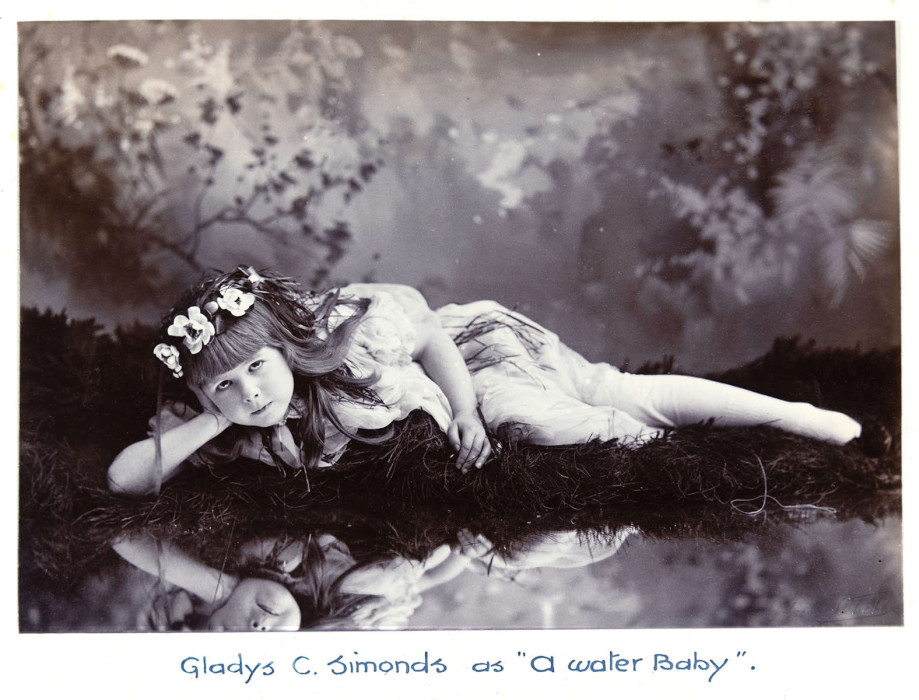
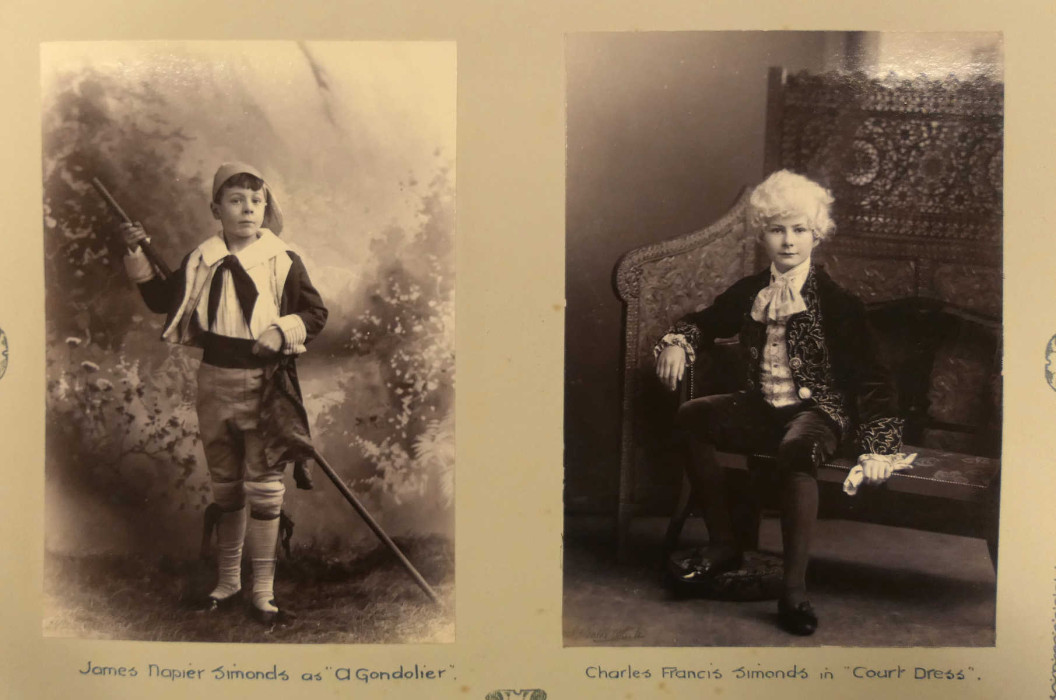
Entertainment included the Royal Marionettes, a Punch and Judy Show with Dog ‘Toby’ and music was provided by the Cramer Quintette. Local newspapers reported on the success of the ball, describing the occasion as 'giving great satisfaction to the parents as well as the children who took part in it' (image below shown courtesy of Reading Libraries).
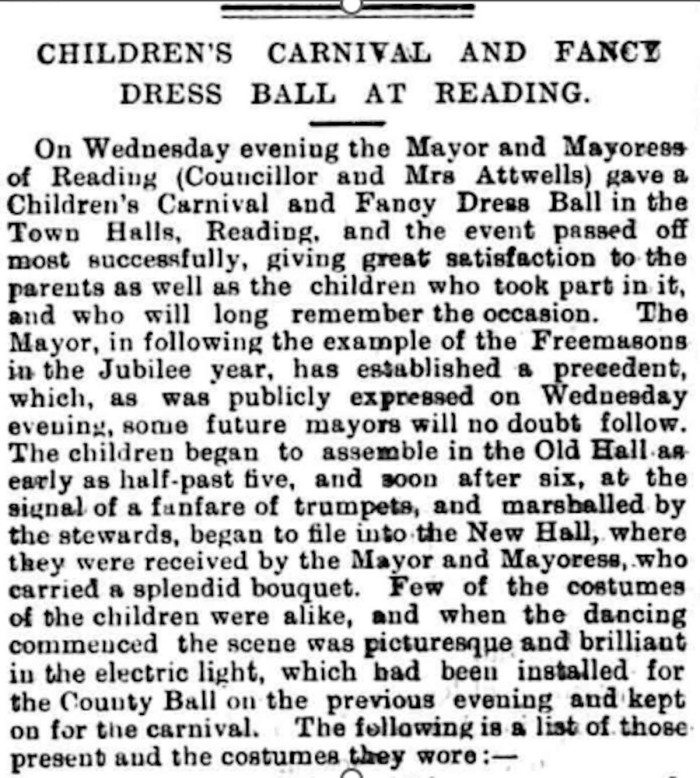
The image of Gladys and her brothers are in a souvenir album of the Children’s Carnival and Fancy Dress Ball, Reading, 1892 which was presented to Mrs Sarah Georgina Attwells, former mayoress of Reading, in commemoration of the Children's Carnival and Fancy Dress Ball given by her and her late husband at Reading Town Hall on 6 January 1892 (ref. D/EX1792/1). Captivated by the photograph of Gladys, one of our Archives Assistants became curious as to who she was and what became of her. They decided to research her life and reveal her story.
Gladys was the daughter of Cecilia Daniel and James Simonds, of the Simonds banking family of Reading. Born on 20th April 1885, Gladys was the fifth of six children. She had three sisters, Cecilia Evelyn (b.1874), Elizabeth Blanche (b.1876) and Doris Roffina (b.1891) and two brothers, Charles Francis (b.1878) and James Napier (b.1883).
At the time of the 1891 census, Gladys was living with her parents and siblings Elizabeth, Charles and James, at Redlands House, Redlands Road, Reading. Below is an image of the house, courtesy of Reading Libraries.
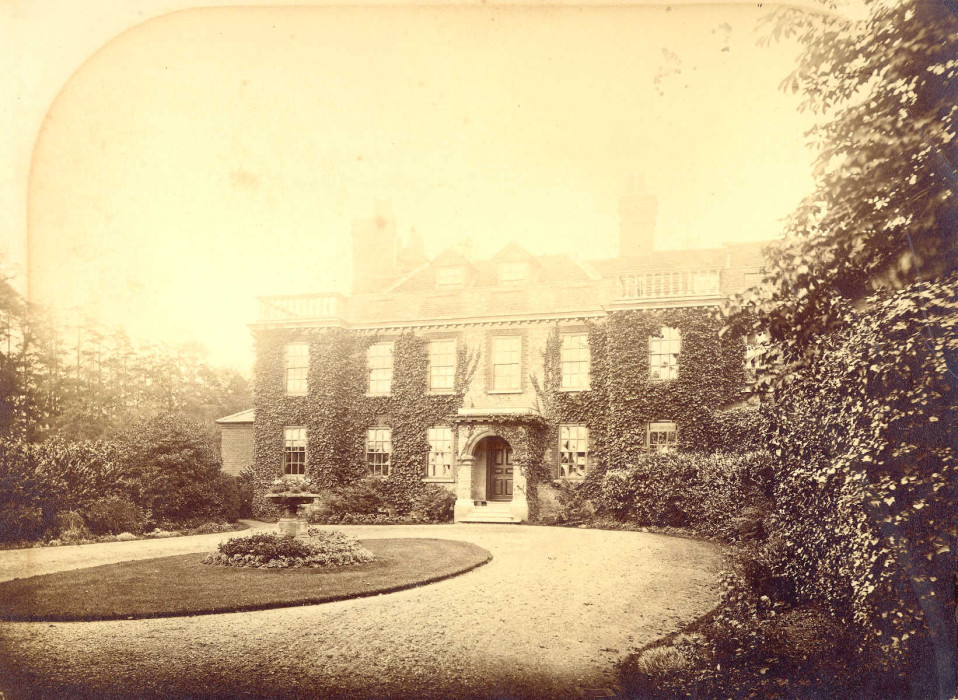
The 1901 census reveals that the family were still living at Redlands House, by which time they had a cook, three housemaids, a scullery maid and a ladies maid. Local newspapers reveal that Gladys studied at the School of Music, Reading College and was a talented celloist. There are numerous mentions in local newspapers of Gladys Simonds performing cello in various concerts in and around the town in the early 1900s, an example of which is shown below (courtesy of Reading Libraries).
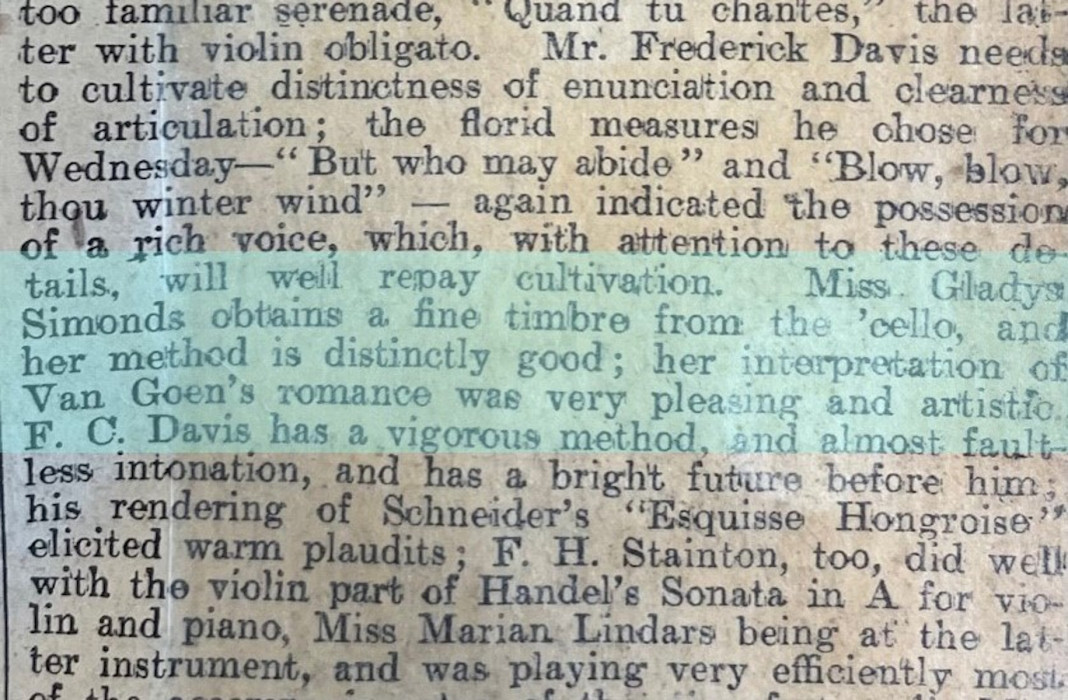
At the age of just 20, Gladys tragically lost her father. On 21st November 1905 James Simonds died, aged 56, at home. He was buried in the family vault at London Road cemetery three days later. Newspapers reported that he had been in ill health for some time. Local obituaries recounted his civic service to the town, his involvement with St John’s and St Stephen’s churches, as well as the Royal Berkshire Volunteers (where he reached the rank of Honorary Colonel) and his love and patronage of amateur sport. An image of James Simonds, Gladys' father can be seen below (courtesy of Reading Libraries).

It is not clear when young Gladys met her future husband, but on 23rd October 1906, just under a year after she lost her father, she married James Alec Charles Gibbs, Brevet-Major in the Duke of Wellington’s Regiment and 18 years her senior. They married at Reading St John’s church:
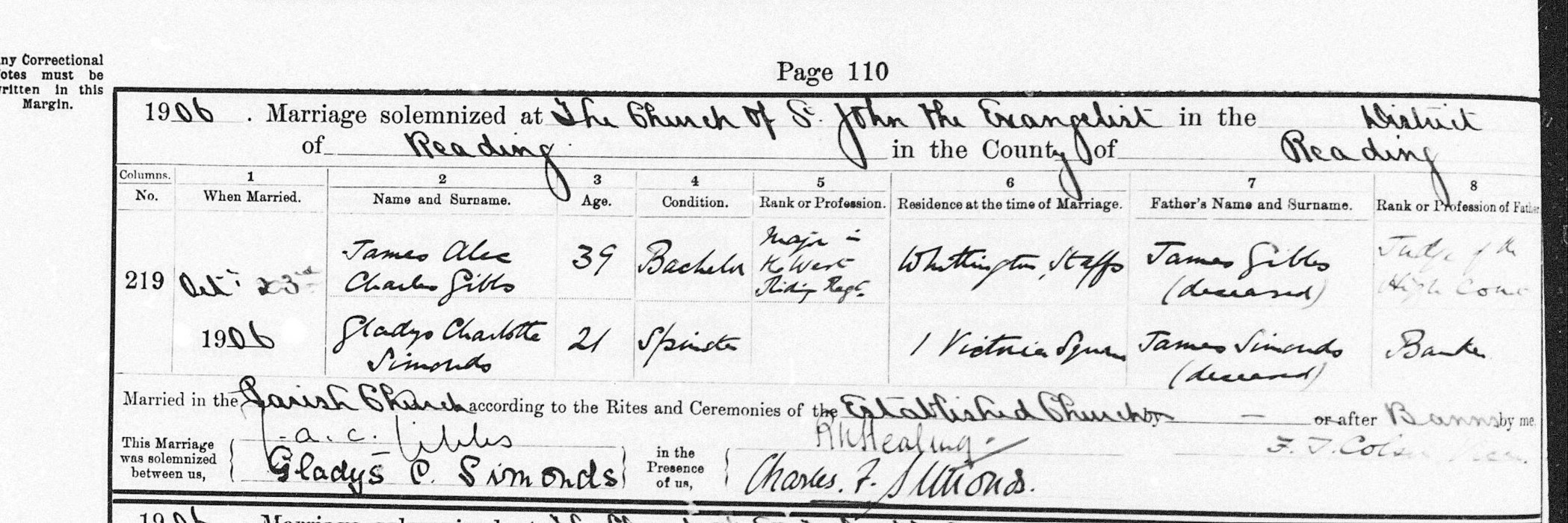
The Berkshire Chronicle reported on the wedding on 27th October "the bride, who is a celloist of much ability, has rendered excellent assistance of many local concerts arranged on behalf of religious and philanthropic objects, and is held in much esteem by her many friends. It was not surprising, therefore, to find that the church was crowded; indeed, many persons were standing in the aisles. The bride, who was accompanied by her brother, Mr Charles Simonds, who gave her away, was exquisitely gowned in ivory chiffon mousseline satin, the bodice being draped with old Brussels lace and silver tissue, knotted with chiffon roses; the full skirt was delicately embroidered with true-lovers' knots in satin ribbon and silver ribbon and silver tissue. She also wore a coronet of orange blossom and tulle veil and carried a shower bouquet of lilies of the valley. The bride wore a regimental brooch, set with diamonds, the gift of the bridegroom.” Clearly Gladys was popular and well thought of.
The following year, on 11th October, Gladys gave birth to a daughter, Gladys Betty Gibbs, in Lichfield, Staffordshire. As a military wife, Gladys was to move several times in these early years of her marriage. By the time of the 1911 census, Gladys and James were living at Osborne House on the Isle of Wight (famous for being Queen Victoria’s residence). Part of the grounds had become the Royal Naval College in 1903 and a section of the house was used as a convalescent home for officers of the navy and army. At this time, three year old Gladys Betty is to be found living separately at barracks in North Tidworth, Andover.
Then, in August 1913, Gladys gave birth to a second daughter, Peggy Julia, in Dublin, Ireland, where her husband’s battalion was stationed. The following August saw the outbreak of war in Europe. Gladys’s husband James Gibbs and her two brothers Charles and James all served in the war. The Simonds family, like so many others, were to live through these anxious and worrying times not knowing if their loved ones would return.
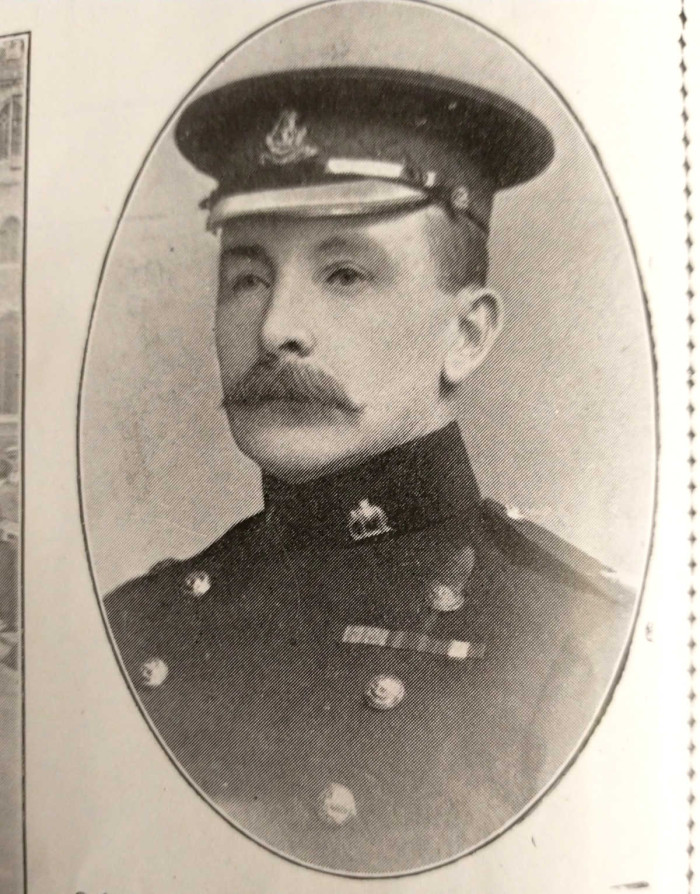
The post First World War publication Berkshire and the War, produced by the Reading Standard reveals “James Gibbs, of the Duke of Wellington’s Regiment, of ‘Wolvercote’, Alexandra Road, Reading was a prisoner of war. Leaving Ireland with his regiment at the outbreak of the war he was in the heavy fighting in France in August 1914 and whilst executing a rearguard action on the 24th of August he was hit by a piece of shell. After hiding for some time in a Belgian house he succeeded in getting into Lord Manners ambulance, in which he stayed for about two months. In November, the Germans ordered the ambulance to be closed down and sent the patients into Germany to various camps.... Colonel Gibbs has served in the same regiment for about 32 years and was awarded the CB in the first list of war honours in 1915. In December 1917 he was sent to Holland for internment”. You can find out more about James Gibbs’ distinguished military career online.
It must have been a challenging time for Gladys. Her husband was to survive the war, as was her brother James, but sadly on 29th June 1916, Charles Francis Simonds, the brother who gave Gladys away just ten years earlier, was killed on the Western Front, aged 38. The personal inscription on his gravestone reads ‘he played the game as a man should play: gay, fearless, debonair’ (Commonwealth War Graves Commission). Charles is buried at Berles-au-Bois churchyard, France. You can find out more about Charles Simonds on the Simonds Family website.

The 1921 census shows that Gladys and James were settled in Ealing, at 40 Eaton Rise. This was where Gladys was to remain for the rest of her life. The family had three servants at this time. James Gibbs was now 53 and whilst still a Colonel in the army, he was working at Hounslow as ‘Colonel in charge of Infantry Records’.
Sadly, Gladys was to be widowed at just 45 years old. On 19th July 1930, the West Middlesex Gazette reported ‘Deaths: on July 14, 1930, suddenly, Colonel JAC Gibbs, C.B, late of The Duke of Wellington’s Regiment, Portobello, Eaton Rise, Ealing, beloved husband of Gladys Gibbs’ (British newspaper Archive). James was 63. He had had a distinguished military career and been mentioned in despatches twice.
Less than eighteen months later Gladys’s mother Cecilia died, aged 77. On 5th February 1932 she was buried at London Road Cemetery, Reading, in the Simonds family vault, alongside her husband James.
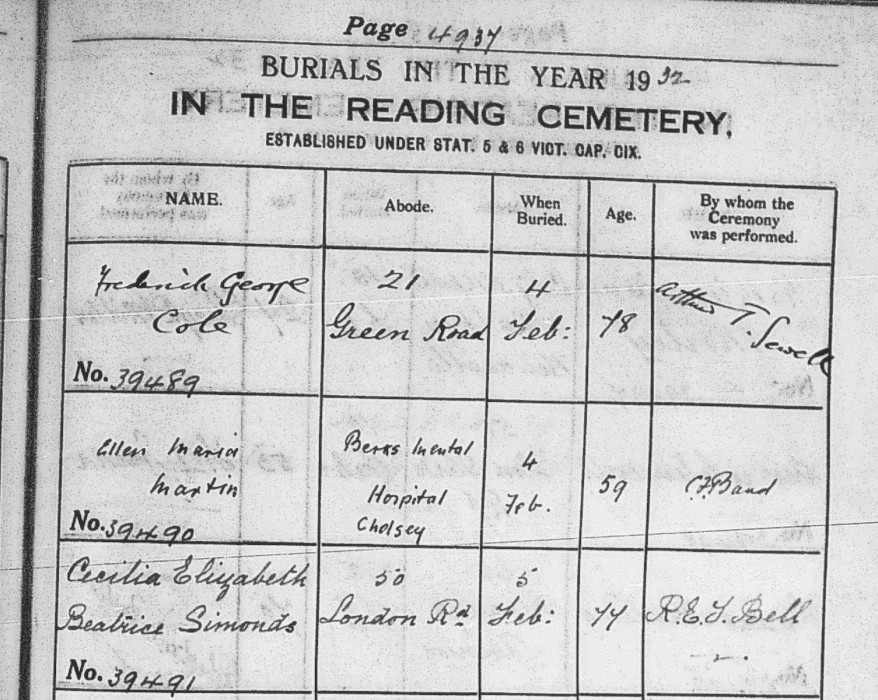
At the outbreak of World War Two in 1939, a register was compiled to issue everyone with a ration book and ID card. This register reveals that Gladys was still living at 40 Eaton Rise, Ealing, of ‘private means’, with her daughter Gladys Betty Gibbs, who was unmarried and whose occupation was described as ‘unpaid, domestic duties’ (that is, she looked after the home). Gladys’s other daughter Peggy Julia was staying at the Highcliff Hotel, Swanage and was recorded as a hospital almoner.
Both of Gladys’s daughters, Gladys Betty and Peggy Julia remained unmarried. The post war London electoral registers reveal that Gladys and her two daughters lived together at 40 Eaton Place from 1946 right up to at least 1965. Gladys lost her eldest daughter Gladys Betty, aged 67, in July 1975. Five years later, on 4th June 1980, Gladys died in Ealing, aged 95. The National Probate Index reveals that Gladys left £83,870 in her will (in today’s money, that is around £200,000). Peggy, her youngest daughter, lived to 88, passing away in 2001.

The young girl dressed as a water baby in 1892 who had been born into privilege from a family with great local standing, would have witnessed much change in her long life. Gladys was a child of the Victorian era. Involved in many local charitable causes through her concert performances as a young woman, she lived as a military wife through the First World War and as a young widow during the Second World War, with a continued presence in her life of her two daughters, who for much of that time lived alongside her.
It was fascinating to discover so much about Gladys simply because her name was attached to the photograph in the Children’s Carnival album of 1892. There are many other photographs of local children in the album, whose lives are just waiting to be uncovered!
